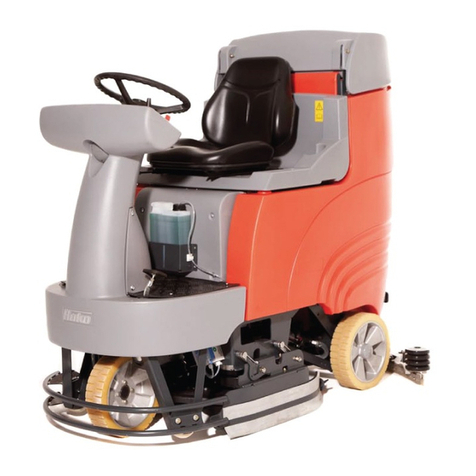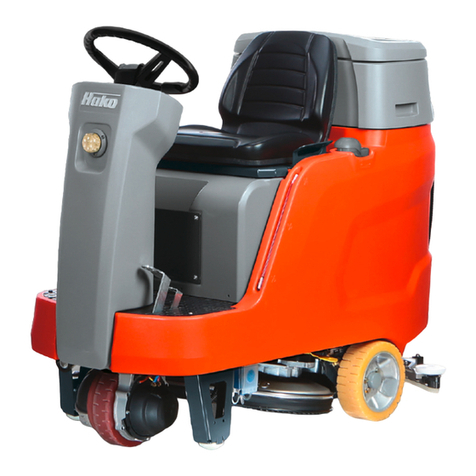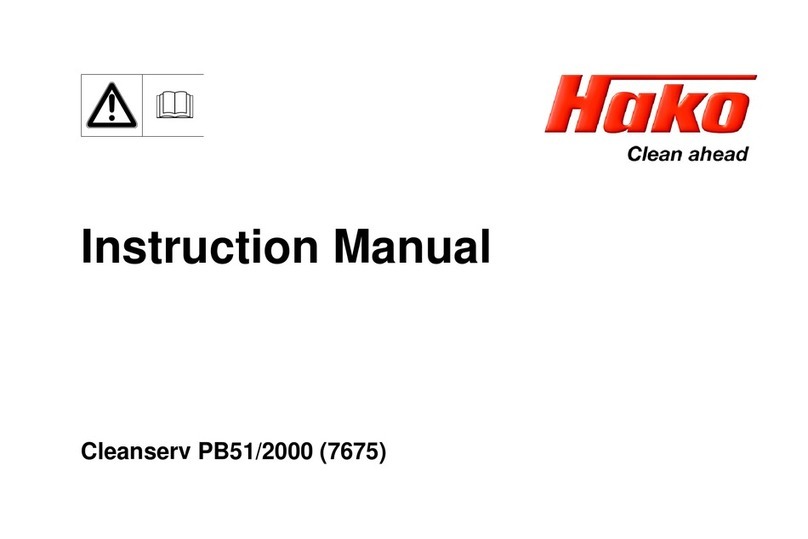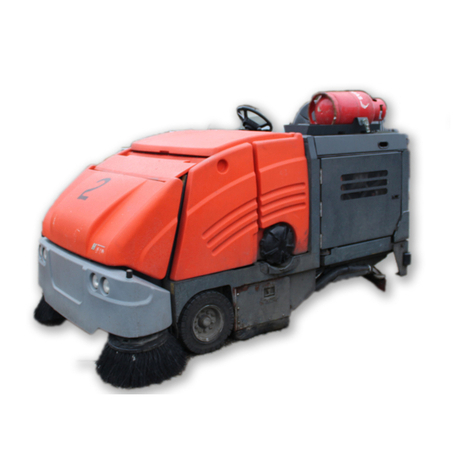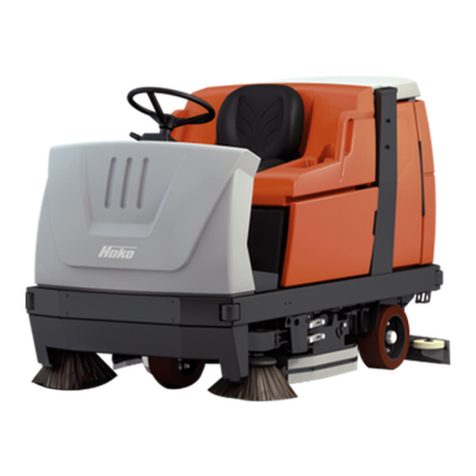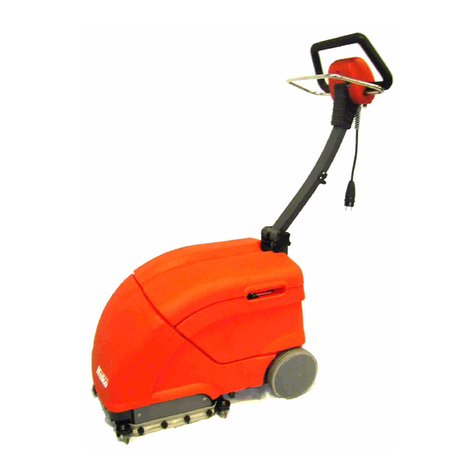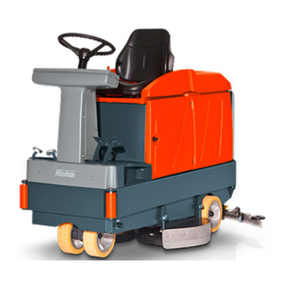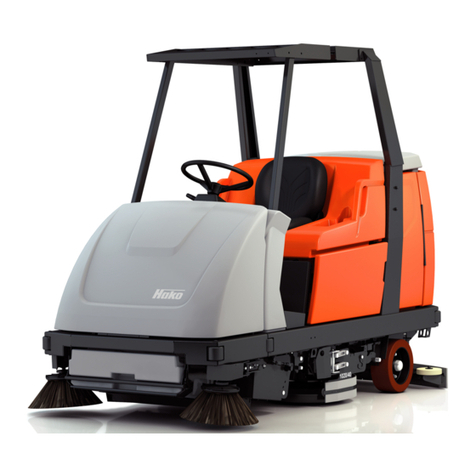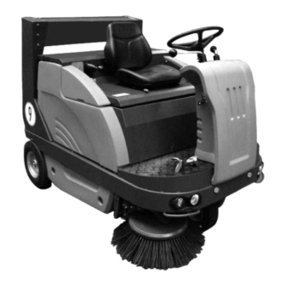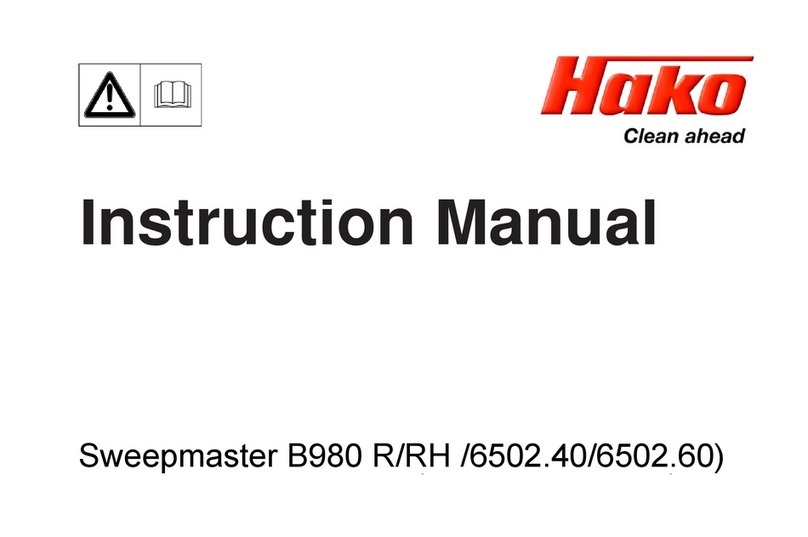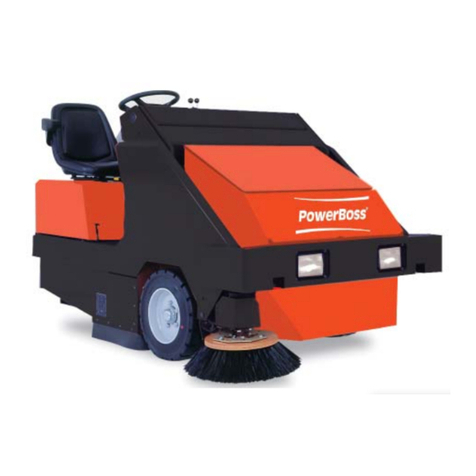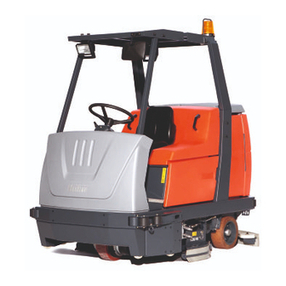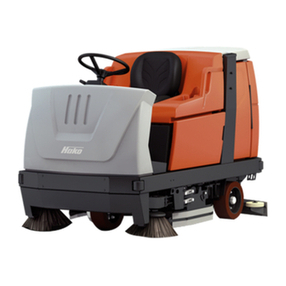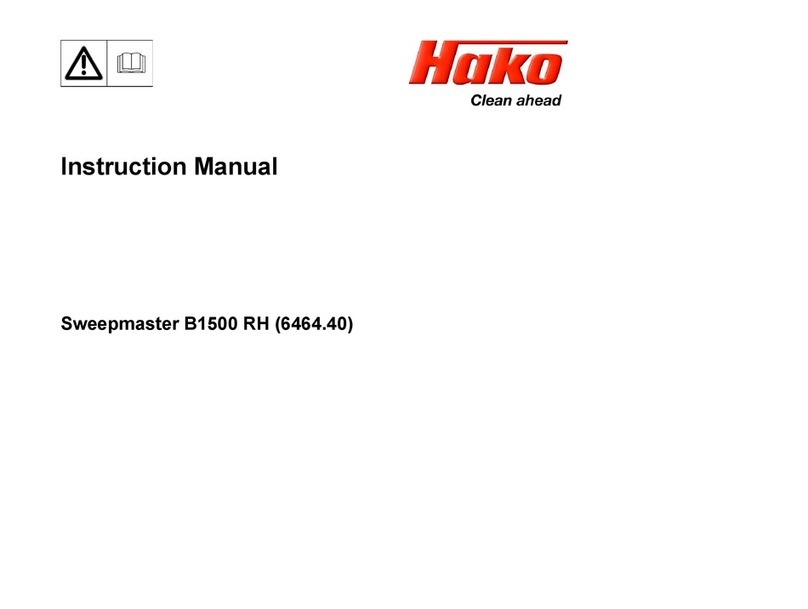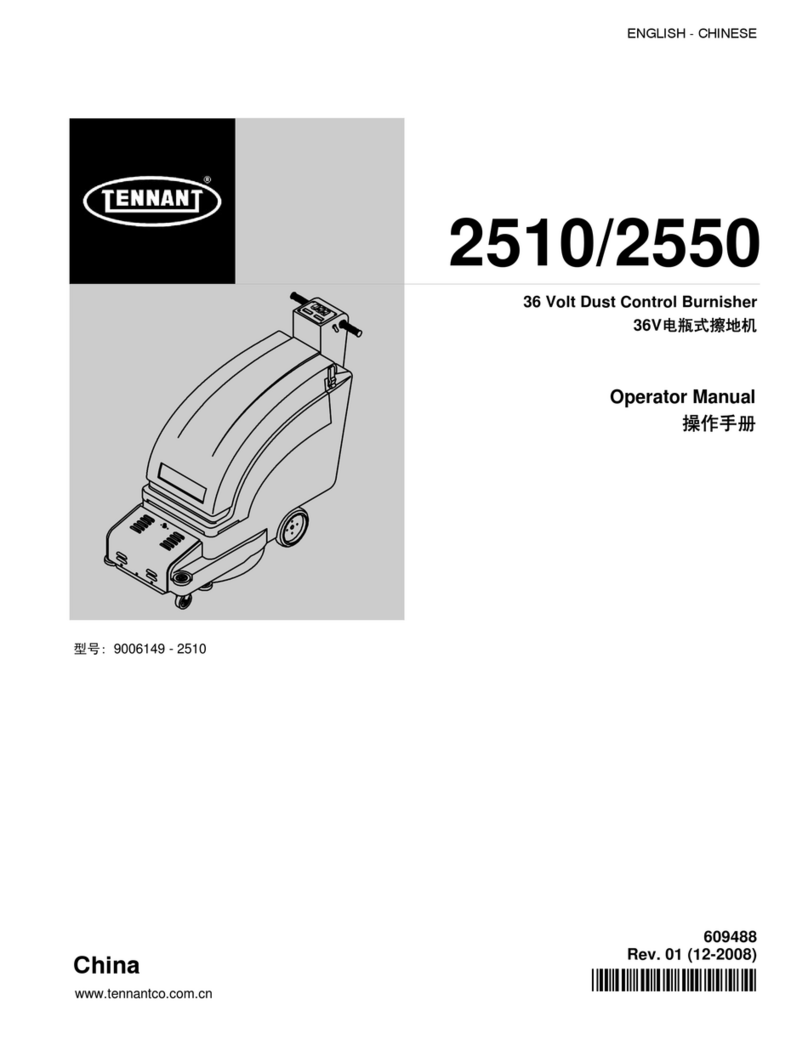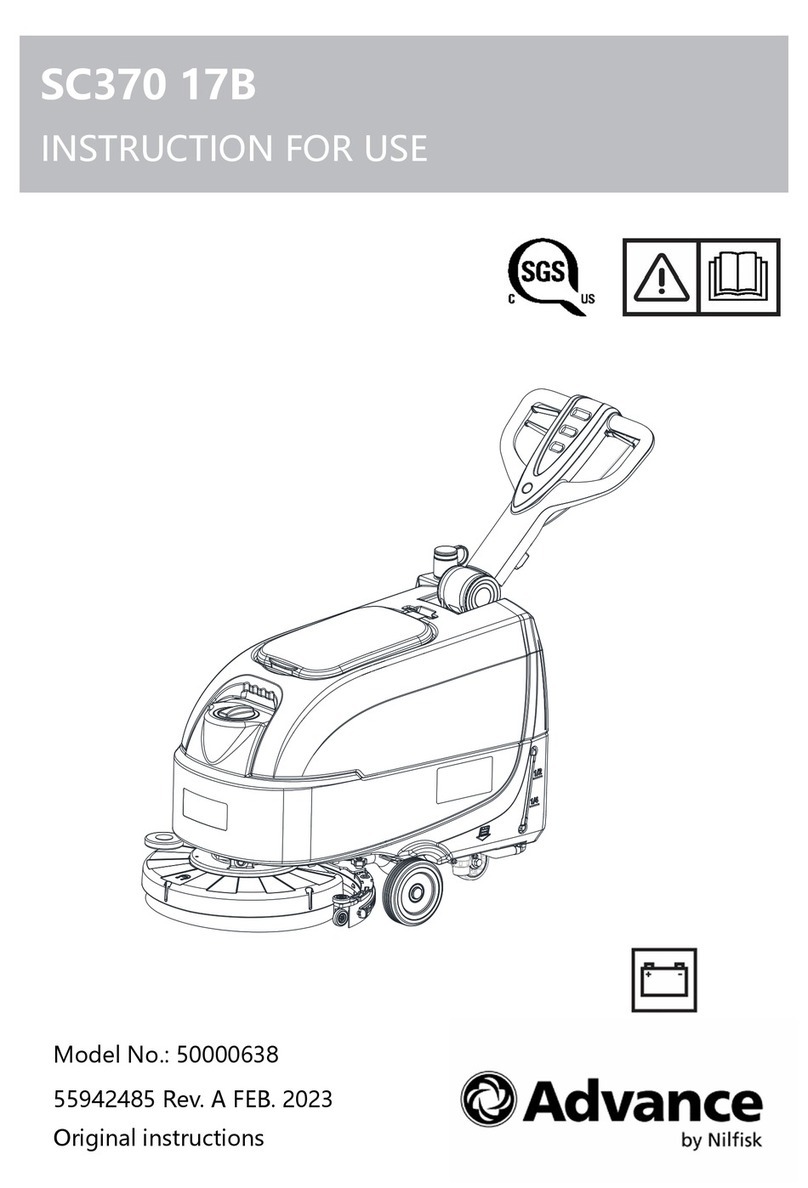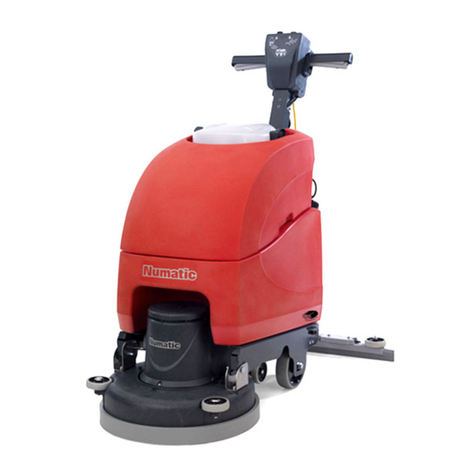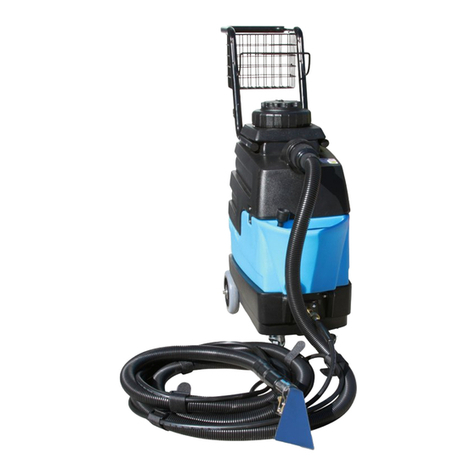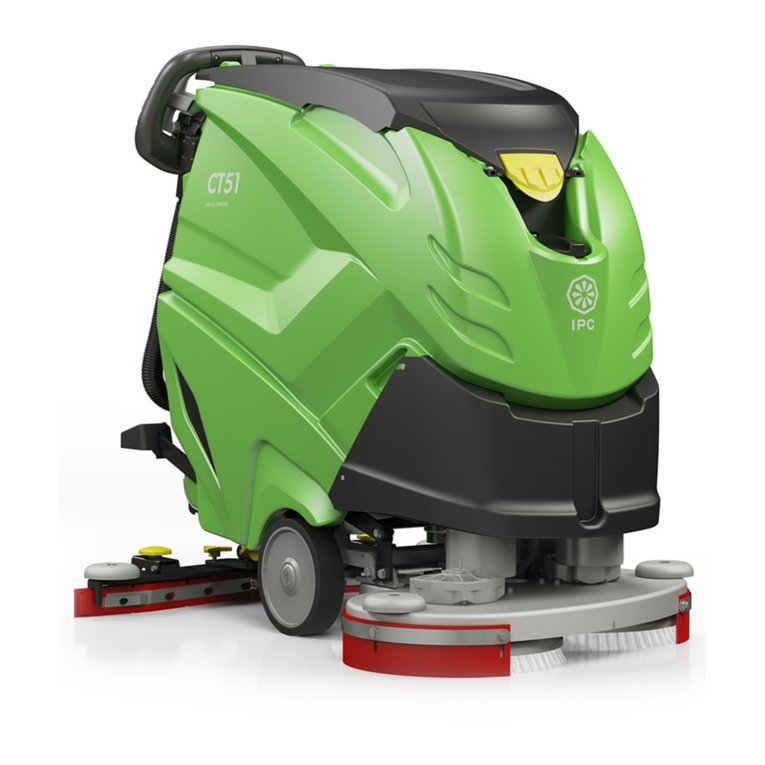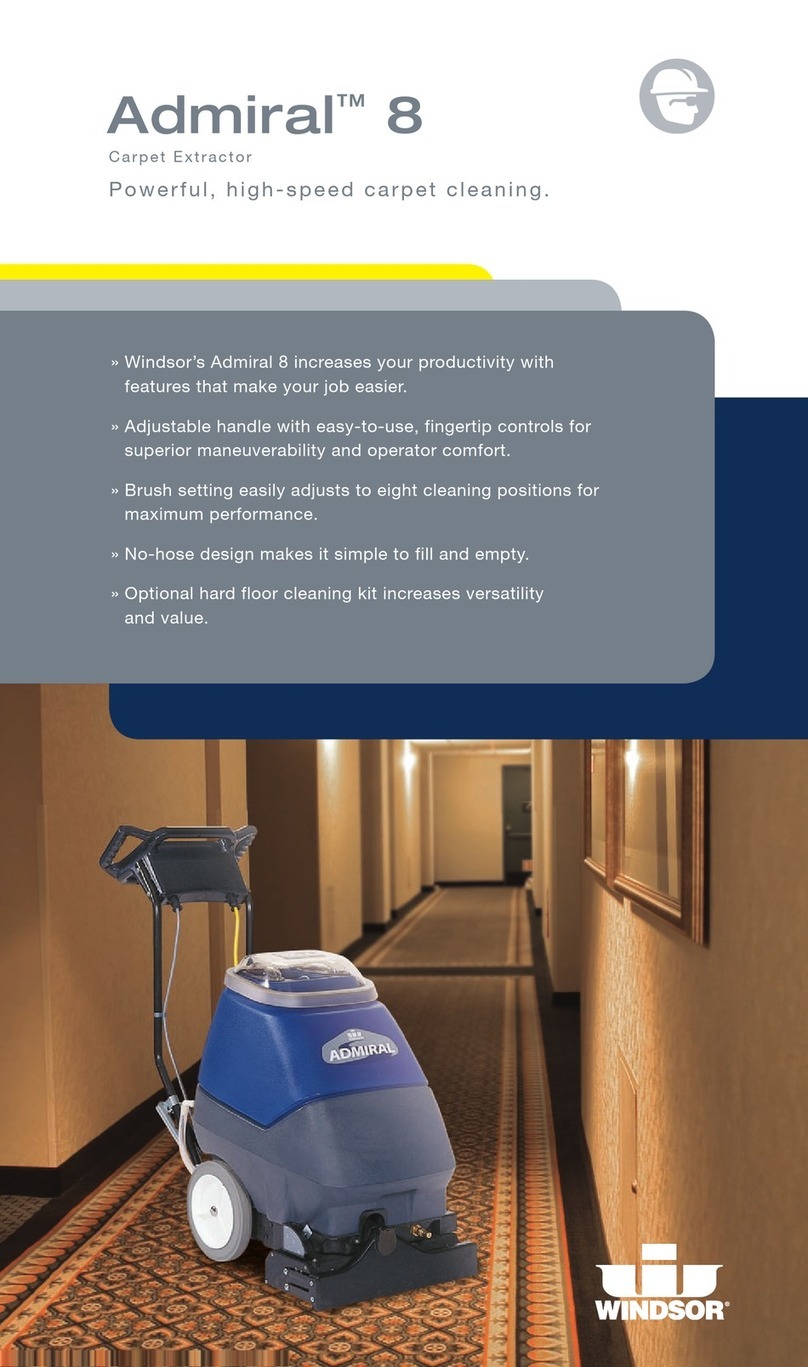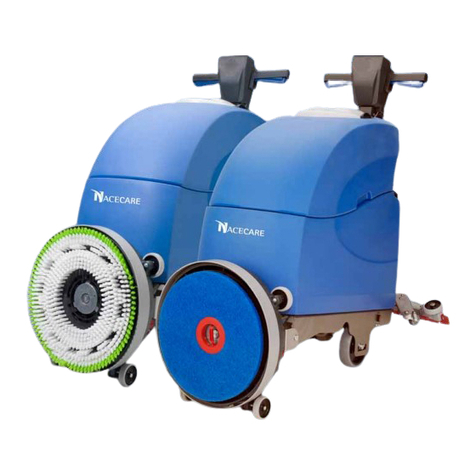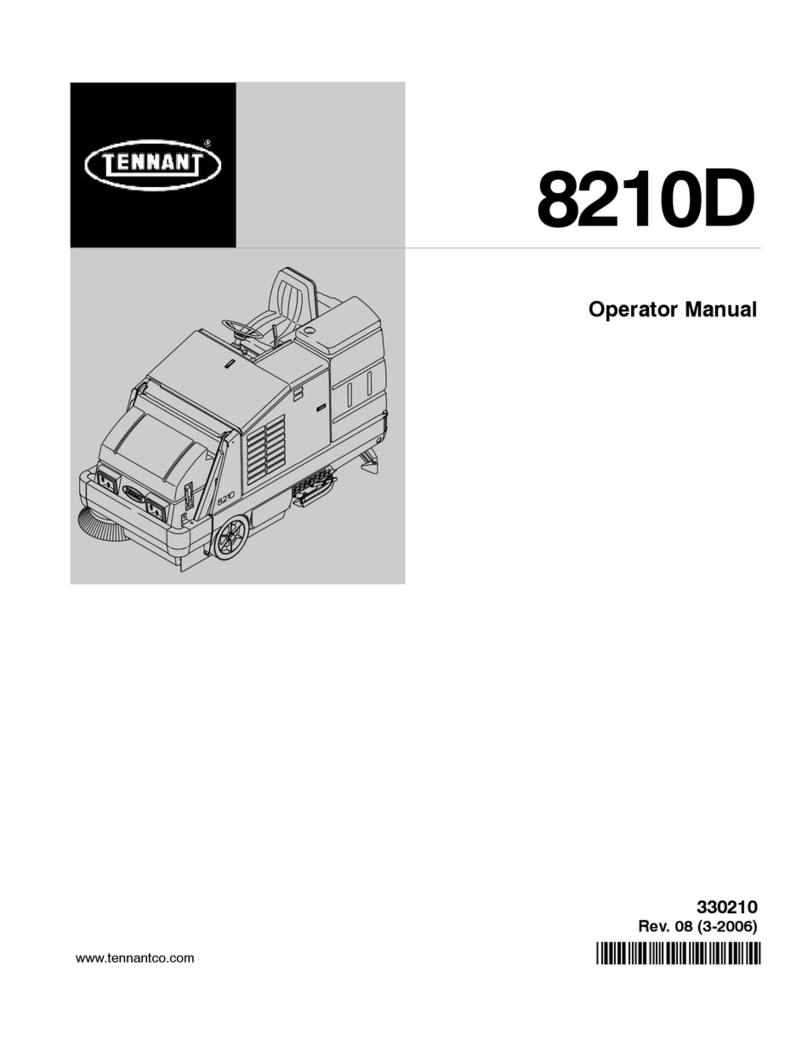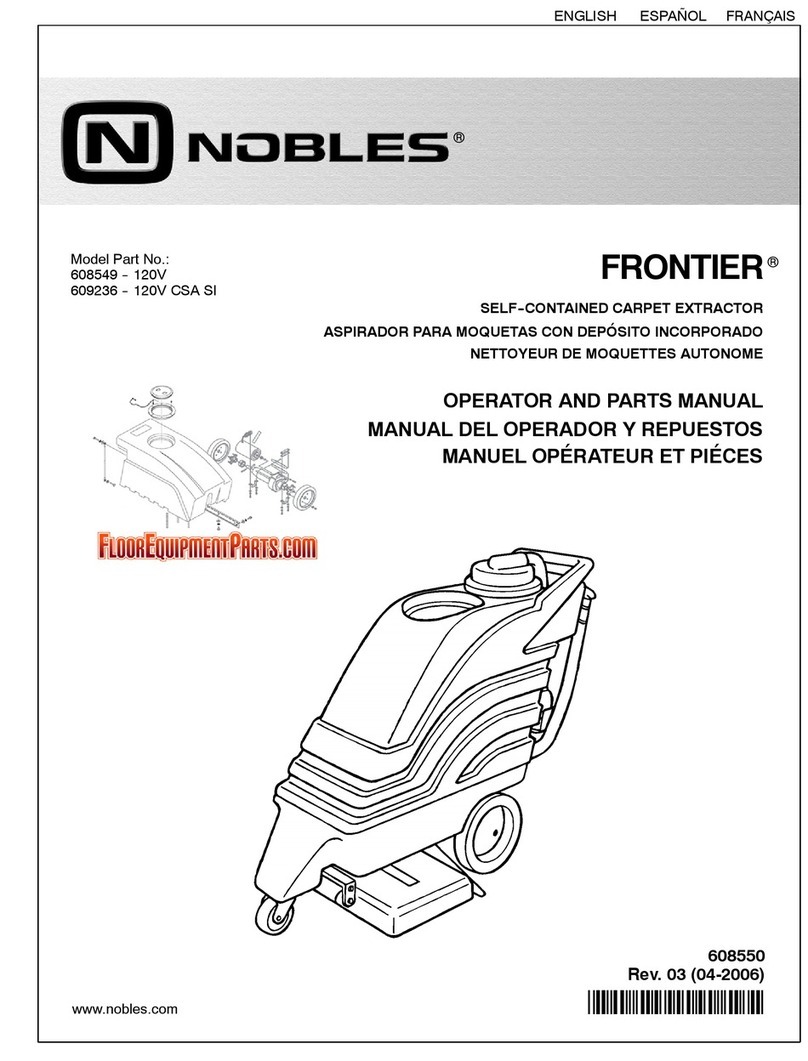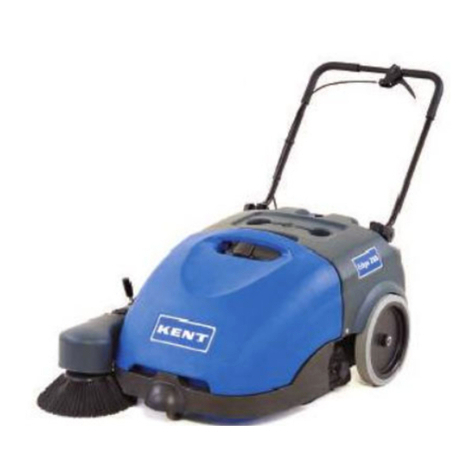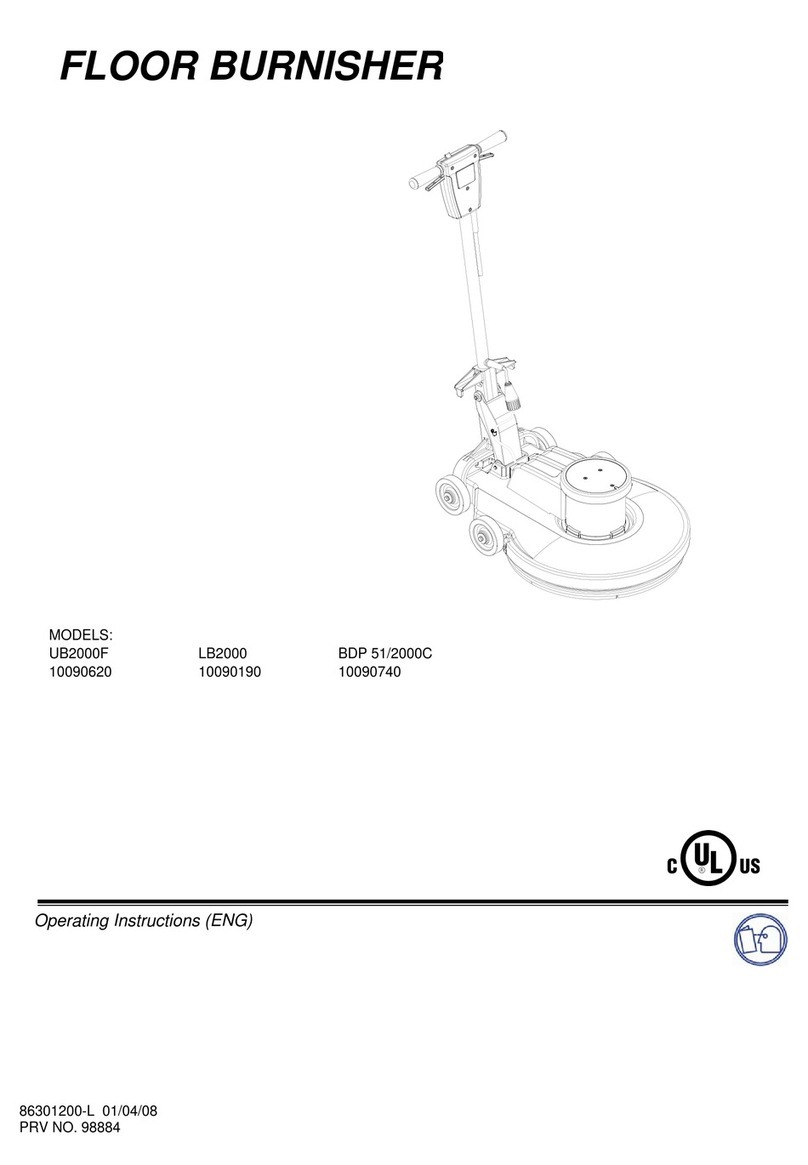8
Safety information
1.3 Operating information
• Check the operational safety of the
vehicle each time before starting it
up! Clear any faults immediately!
• Before starting work, the operator
must be fully familiar with all adjust-
ment, operating and control ele-
ments as well as their respective
function! It is too late to do this when
the vehicle is actually in operation!
• Always wear heavy duty, non-slip
footwear when working with the ve-
hicle.
• The vehicle may only be driven on
and the equipment used on those
surfaces which have been approved
by the contractor or person appoin-
ted by him.
• When using the vehicle, it is essenti-
al to pay attention to third parties, es-
pecially children.
• The vehicle is not suitable for clea-
ring up hazardous, inflammable or
explosive fluids, dust or substances.
• This vehicle must not be used as
dust cleaner equipped with a dust fil-
ter insert (dust collector) to clear up
dust which could represent a hazard
to health.
• It is forbidden to use the vehicle in
potentially explosive atmospheres.
• Remove the ignition key to prevent
unauthorized use of the vehicle.
• The vehicle and its equipment must
be checked in terms of perfect wor-
king condition and operational safety
before being put into use. The vehic-
le must not be used if it is not in a
proper working condition.
• Before putting the vehicle into opera-
tion, adjust the driver's seat so that
you have a perfect view of the front
and rear path of travel and working
area!
• For safety reasons, the driver's seat
is equipped with a seat contact
switch; the function of the seat con-
tact switch must not be bypassed!
• The seat contact switch is monitored
electronically. Any attempt at mani-
pulation can lead to the vehicle being
automatically locked against use.
• Always switch off all the drives befo-
re starting the engine.
• The vehicle must only be started, put
into motion and stopped from the se-
at.
• Do not allow the engine to run in clo-
sed rooms! Risk of poisoning!
• Ensure there is sufficient ventilation
when sweeping in closed spaces
(dust and exhaust fumes).
Risk of poisoning!
• The driving speed must always be
adapted to the ambient conditions
and load status.
Three-wheel vehicles are less stable
than four-wheel vehicles, therefore:
avoid sudden steering movements
when driving at higher speeds, ta-
king corners at too high a speed
could cause the vehicle to tip.
Only use the vehicle on level sur-
faces, never on gradients.
Drive up and down inclines in
straight lines.
When driving up, down or across slo-
pes, avoid turning corners suddenly
or in jerks. There is a risk of tipping
when in an inclined position!
• The vehicle has been conceived for
use on surfaces with a maximum
gradient of 16%.
• The approved gross total weight and
permissible axle loads must never
be exceeded. Check the fill level of
the sweepings container at frequent
intervals.
• Before raising or lowering the
sweepings container, ensure that
